Scranton, Pa.
NPS Website; Local Website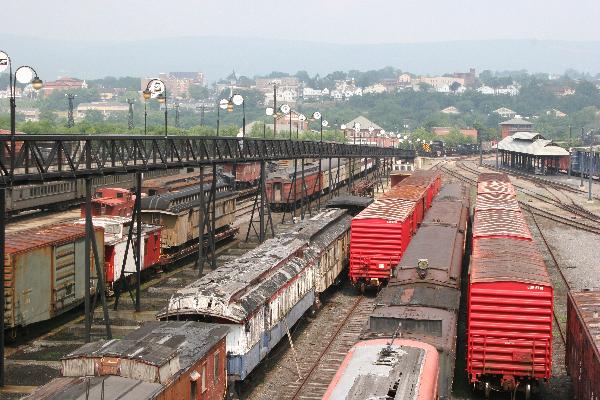
Museum, large collection of steam locomotives, working turntable and roundhouse located on an old railroad yard near downtown Scranton, PA and The Mall at Steamtown.
BEAUTY (2/10)
Steamtown NHS’s official brochure includes no present-day pictures of the Site, only skillful pen and ink illustrations. Bad sign. Only the most eccentric trainspotter could find beauty at Steamtown.
Scores of freight cars, passenger cars, and steam locomotives sit on rows of train tracks which border the utilitarian rectangular architecture of The Mall at Steamtown and its parking garage. A long board-walked pedestrian ramp conveniently leads from the Mall’s Food Court to the Park. The Mall Ramp gives you a stellar close-up view of the rolling stock collection.
Perhaps too close. This intimate view fully reveals the cars’ dilapidated state. Generous amounts of rust, frayed wood and sympathy-inducing disrepair are the norm.
HISTORICAL INTEREST (2/10)
The Steamtown NHS’s claim to historical significance is dubious at best: the yard may have been represented in George Inness’s classic American landscape painting “The Lackawanna Valley”.
Ironically, the painting’s juggernaut iron horse and indelible train tracks, themselves a symbol of the coming industrial revolution and unstoppable progress, had to be reintroduced to the Lackawanna Valley in 1985 by a US Congressman. The trains had been living in Vermont.
The Scranton Yard was never a particularly central or important cog in our nation’s railroad network. The Yard has probably seen more attention since becoming a Park Site. Sadly, its notoriety is linked to “pork barrel” politics. The Park is oft-cited as a dastardly example of federal tax dollars pouring into an economically depressed city for pie-in-the-sky urban renewal purposes.
The Site’s lack of tangible historical significance, Canadian engines and proximity to its namesake Mall do not garner a positive national public image.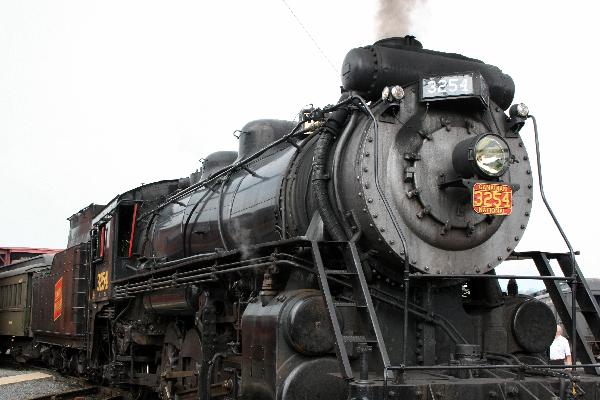
The Site was not empty but also was not as crowded as The Mall at Steamtown. We saw our sentiments of why exactly are we here? echoed on the faces of a model railroading club’s members, here on a team vacation to Pennsylvania railroad sites; their route was listed on the back of their T-shirts, rock concert tour style. Steamtown seemed like their least-fun destination.
EASE OF USE/ACCESS (4/5)
The Site is located in downtown Scranton, a few miles from Interstate 81. Take Exit 185, the Central Scranton Expressway. Turn left at the first stoplight and follow this road, Lackawanna Avenue, past seven sets of traffic lights to Cliff Avenue. Turn left into the Site’s vast parking lot. There are lots of signs.
After spending the morning looking for the Scranton AAA, we followed the wrong signs: the ones pointing us towards The Mall at Steamtown rather than Steamtown NHS. We parked in the Mall’s garage and perused the shops before traveling down the Mall Ramp to the Park Site.
The Park’s two-story museum is located in a series of roundhouse buildings which circle the working turntable. We got disoriented going up and down various steps of stairs and into buildings and rail cars we were not sure we should have entered.
CONCESSIONS/BOOKSTORE (4/5)
Plaques, pins, posters and prints commemorating almost all the Mid Atlantic regional railroads in their various ages of mergers and rebirths are for sale here. And if we wanted to begin lives as trainspotters, the Steamtown bookstore offers what appear to be some good primer texts: Trainspotting Hot Spots, 2006 Tourist Trains, a Guide to North American Steam Locomotives and scores of color guides dedicated to the C&O, Lehigh and Hudson, Penn Central and Erie Lackawanna lines.
There is an entire aisle of children’s books and plenty of Thomas the Tank Engine merchandise for little ones. If you were looking for a wooden train whistle, you could pick one up at Steamtown. A nice museum store, but we were a little disappointed at the lack of authentic memorabilia and region-centric selection.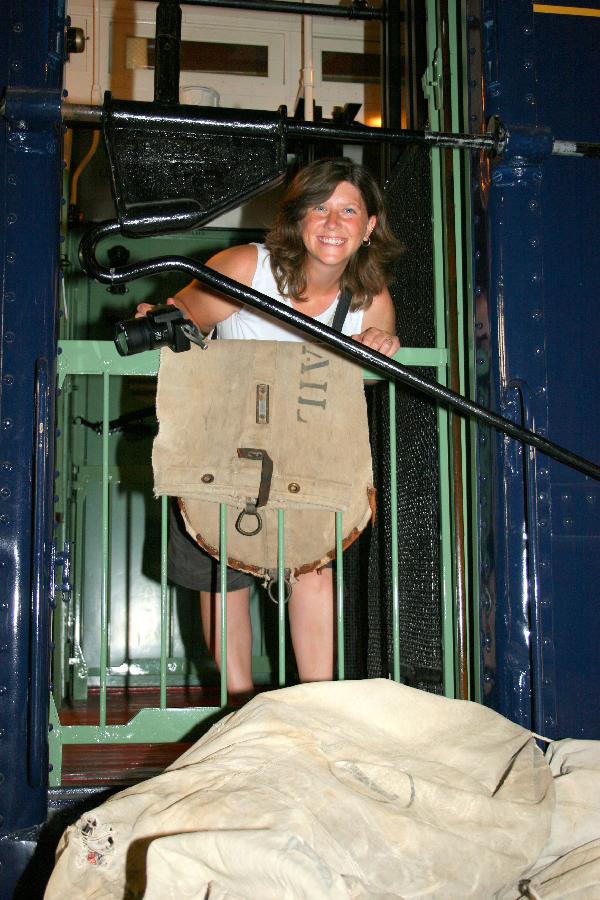
The Park Museum entry fee is $6 per person, free with the National Parks Pass. A short railroad trip around the Park’s grounds runs $3. Longer excursions to Moscow, Pa. and Tobyhanna, Pa run $21 and $31 respectively.
RANGER/GUIDE TO TOURIST RATIO (2/5)
A Ranger made a brief appearance in the VC vestibule to orient one of the recently arrived train enthusiast groups. We may have seen another Ranger boarding a train that was preparing to leave for an excursion. If we had questions that delved beyond the static displays, we would have been hard pressed to find someone to ask.
TOURS/CLASSES (3/10)
The exhibits were too basic for the train enthusiast but too esoteric, too wordy, too numerous and not interactive enough for the casual visitor. We were simultaneously bored and overwhelmed.
FUN (3/10)
We arrived at Steamtown NHS with peaking levels of cynicism and disdain. Naturally, Michael descended into a rambling self-righteous monologue. How dare the National Park Service sully its name with a pork barrel Site especially when an important railroading place like Golden Spike NHS gets so little Appropriations love?
Mostly though, we were both angry because our Fodor’s Official National Park Guide Book told us that our National Parks Pass would not be honored. But when the ticket collector told us our Pass was good and that we would not have to pay $12 we felt a lot better. Maybe this place is not so bad at all. Let’s give it a chance. And we did.
We even enjoyed ourselves. We hopped on train cars, watched the film, snapped some photos, read some panels and decided to have a great time. Gradually, the incredulity regarding the Park’s existence returned as we learned more about the Site’s history.
What do you mean all the working locomotives are Canadian!!! Really, all the trains were bought from a failing Museum in Vermont and moved to Scranton in the early 80’s AND then failed in Scranton until the feds came in and made it a Park Site. Shocking.
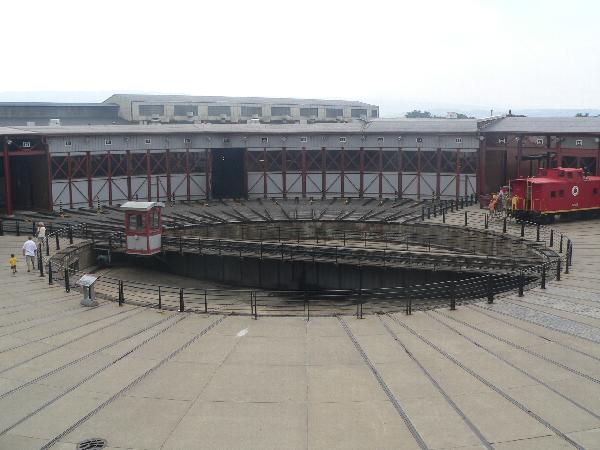
Less tangentially, the Steamtown NHS Museum stopped gaining our interest because the exhibits were boring and generic. Only the Park’s infamous history grabbed for our attention. Our fun levels had fittingly come full circle at the Roundhouse-based Site.
WOULD WE RECOMMEND? (3/10)
There are too many fun and interesting railroad excursions and/or museums in Pennsylvania to make Steamtown NHS your priority. The East Broad Top Railroad chugs up America’s oldest stretch of narrow gauge track near Mount Union, PA, the elegant Horseshoe Curve amazes near Altoona and the Strasburg Railroad and Museum in Amish Country Lancaster houses an impressive collection of locomotives. You can even hop on a Strasburg train and take the beautiful Journey to Paradise, a much more desirable destination than Moscow, Pa. Just kidding, Aunt Helen.
TOTAL 31/80
www.usa-c2c.com
© 2004-06
Sunday
STEAMTOWN NATIONAL HISTORIC SITE
FORD’S THEATRE NATIONAL HISTORIC SITE and PETERSEN HOUSE
Washington, DC
NPS Website; Local Website
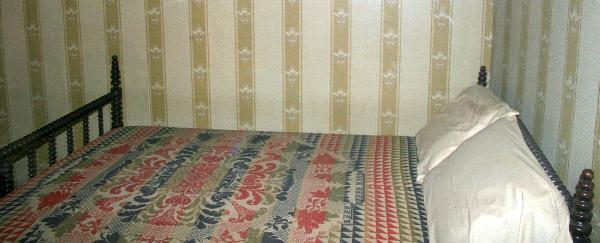
WHAT IS IT?
Ford’s Theatre is an active theatre infamously remembered as the place where, on April 14, 1865, John Wilkes Booth shot and killed President Abraham Lincoln during a performance of Our American Cousin. Once shot, Lincoln was carried next door to the Peterson House where he would later die.
BEAUTY (3/10)
Neither Ford’s Theatre nor the Peterson House has a striking exterior. Be thankful for the signs, Rangers and the steady stream of entering tourists to distinguish them from the other bricked buildings on 10th street.
The interiors of both have been carefully reconstructed to their 1865 appearances. Lots of dark colors and velvet-y drapes in the theatre; plenty of uncomfortable looking furniture and narrow hallways at Peterson. We are guessing that little has been done to alter the appearance of the Peterson House since its most famous guest passed away.
HISTORICAL INTEREST (8/10)
In the Peterson House, a/k/a House Where Lincoln Died, a/k/a HWLD, you can see the Bed Where Lincoln Died (BWLD) in the Room Where Lincoln Died (RWLD) overlooking the Courtyard of the House Where Lincoln Died (COTHWLD).
Did the fateful shot at Ford’s Theatre save Lincoln from being associated with the failures of Reconstruction, or did it steal a great leader away from a nation when it needed him most? Either way, Ford’s Theatre was the backdrop for a tragedy that altered the history of the United States.
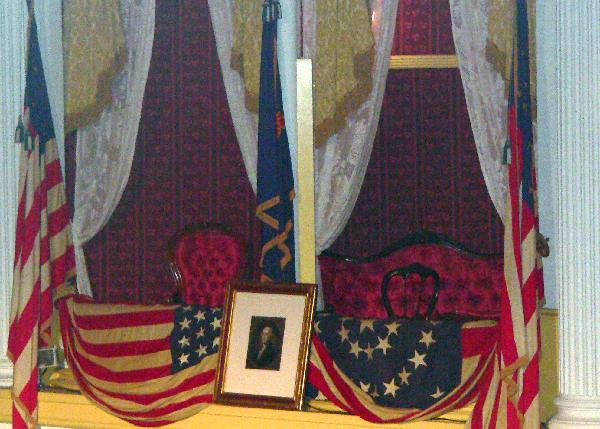 A very popular 1860s venue, Ford’s Theatre was closed down by the Federal Government during the investigation and subsequent trial of the conspirators. After that, John Ford was allowed to reopen but was plagued with threats of arson and destruction. The War Department temporarily shut down the Theatre, leased the building from Ford as office space and then finally decided to take it off his hands for $100,000 in 1865. The collection of Lincoln memorabilia was added in 1926 and restoration efforts began in earnest in the 1960s. Today, the Theatre enjoys life as both a National Historic Site and a fully functioning theatre for contemporary American drama.
A very popular 1860s venue, Ford’s Theatre was closed down by the Federal Government during the investigation and subsequent trial of the conspirators. After that, John Ford was allowed to reopen but was plagued with threats of arson and destruction. The War Department temporarily shut down the Theatre, leased the building from Ford as office space and then finally decided to take it off his hands for $100,000 in 1865. The collection of Lincoln memorabilia was added in 1926 and restoration efforts began in earnest in the 1960s. Today, the Theatre enjoys life as both a National Historic Site and a fully functioning theatre for contemporary American drama.
CROWDS (7/10)
Being a site for public gatherings and stage performances, Ford’s Theatre by its very nature can handle a good deal of people without problems. Exhibits in the basement museum are all encased in clear rectangular columns to allow for optimum viewing by the largest number of people possible.
Enjoy your elbow room at the Theatre because the Peterson House is another story. Crowds, and by crowds we mean any more than 3 people, can easily clog the house’s narrow hall and limit your views of the parlors and famous BWLD. You may want to coordinate your entrance to the number of people you see exit.
EASE OF USE/ACCESS (5/5)
Ford’s Theatre NHS is less than three blocks from all five DC Metro rail lines. The nearest station is Metro Center (blue, orange and red lines), located two blocks to the west. Gallery Place-Chinatown (green, yellow and red lines) is three blocks to the northeast.
Street parking could get tricky but there are plenty of nearby parking garages.
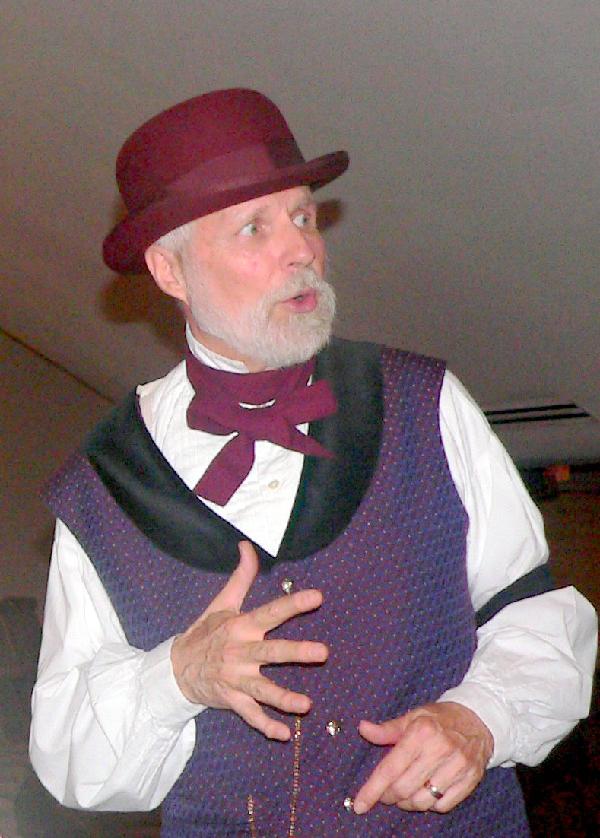 CONCESSIONS/BOOKSTORE (4/5)
CONCESSIONS/BOOKSTORE (4/5)
Full shelves carry over a hundred stories about the Civil War, the Assassination and all other aspects of old Abe. There is a much better selection here than at the Lincoln Memorial; more room to move too. Posters, photos and guides of the Capital city round out the bookstore offerings. Be sure to save room in your Passport Book for the FOUR stamps you can get here.
COSTS (5/5)
What’s the best part about Washington, DC? Nearly every museum is free!
Our visits to Ford’s Theatre have always been greeted by impromptu (and free) Ranger tours, programs and talks.
RANGER/GUIDE TO TOURIST RATIO (5/5)
Open the door to Ford’s Theatre and you will see at least three Rangers ready to answer your “how much does it cost” question with a smile and “nothing at all!” We heard the cost inquiry at least a half-dozen times; these Rangers make so many people feel happy every day.
TOURS/CLASSES (8/10)
Ford’s Theatre remains the same. Plays are still held, the balcony still provides the same views of the stage and American flags are still draped over the President’s box. So it becomes pleasantly disconcerting when you climb the stairs and see a man in period costume recounting, in convincing first-person as the DC Chief of Police, the assassination and the subsequent hunt for conspirators. Waves of tourists blasted the Ranger with an endless and fascinated stream of questions. What a perfect way to learn about the case’s basic facts.
The Ford’s Theatre basement museum is a treat for history buffs and CSI-watchers alike. It must hold the most macabre set of artifacts in all of DC including: Lincoln’s blood stained overcoat; the guns Booth carried and presumably the one he shot Lincoln with; ticket stubs from the April 14, 1865 performance; the hoods worn by Booth’s co-conspirators when they were hung and; the knife with which Booth stabbed Henry Rathbone. Amazingly, they are all originals.
FUN (8/10)
A visit to Ford’s Theatre NHS and the HWLD is low effort, high reward. Two free sites in a one block radius, close to Metro stops and many lunchtime options. It doesn’t get easier than this. Heck, you might not have even meant to come here but found yourself beckoned inside by one of many Rangers as you were walking to an event at the MCI Center or to the newly reopened Portrait Gallery. Go in! Go in! We were highly entertained by the highly biased retelling from the DC Chief of Police and were amazed once again by the vast collection of original items downstairs. The Peterson House is so close by that it is a mandatory stop. You can’t watch just half the plot, can you?
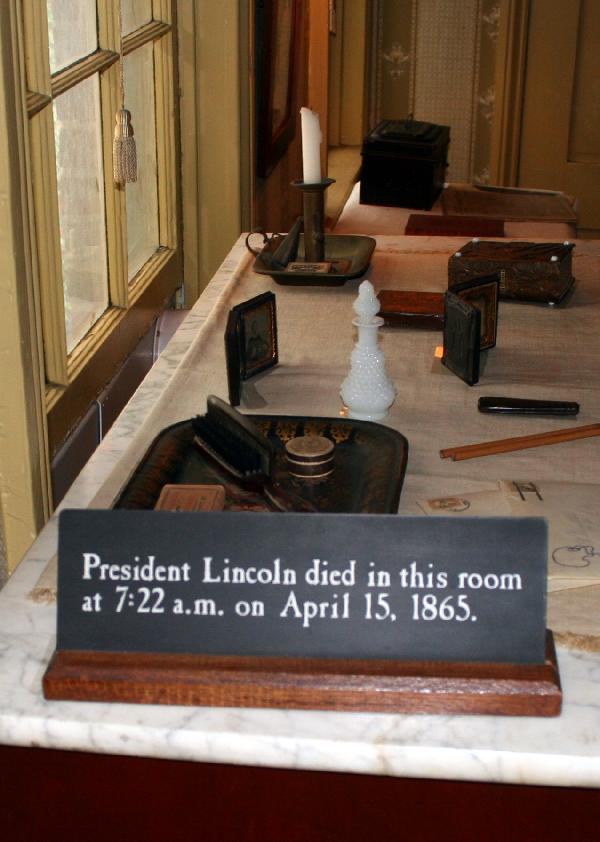 WOULD WE RECOMMEND? (9/10)
WOULD WE RECOMMEND? (9/10)
You bet. Ford’s Theatre NHS and the Peterson House (HWLD for those in the know) are two of the more interesting DC sites – something actually happened here. You can get your fill of crime, tragedy, intrigue and justice all without leaving the Theatre; the HWLD is a subdued denouement to the action. The shooting of Lincoln and capture of Booth and his colleagues plays out just like a modern day police drama. In his death, the martyred hero loses his faults and becomes larger than life and the bad guys get caught.
TOTAL 62/80
www.usa-c2c.com
© 2004-06
NPS Website; Local Website

WHAT IS IT?
Ford’s Theatre is an active theatre infamously remembered as the place where, on April 14, 1865, John Wilkes Booth shot and killed President Abraham Lincoln during a performance of Our American Cousin. Once shot, Lincoln was carried next door to the Peterson House where he would later die.
BEAUTY (3/10)
Neither Ford’s Theatre nor the Peterson House has a striking exterior. Be thankful for the signs, Rangers and the steady stream of entering tourists to distinguish them from the other bricked buildings on 10th street.
The interiors of both have been carefully reconstructed to their 1865 appearances. Lots of dark colors and velvet-y drapes in the theatre; plenty of uncomfortable looking furniture and narrow hallways at Peterson. We are guessing that little has been done to alter the appearance of the Peterson House since its most famous guest passed away.
HISTORICAL INTEREST (8/10)
In the Peterson House, a/k/a House Where Lincoln Died, a/k/a HWLD, you can see the Bed Where Lincoln Died (BWLD) in the Room Where Lincoln Died (RWLD) overlooking the Courtyard of the House Where Lincoln Died (COTHWLD).
Did the fateful shot at Ford’s Theatre save Lincoln from being associated with the failures of Reconstruction, or did it steal a great leader away from a nation when it needed him most? Either way, Ford’s Theatre was the backdrop for a tragedy that altered the history of the United States.
 A very popular 1860s venue, Ford’s Theatre was closed down by the Federal Government during the investigation and subsequent trial of the conspirators. After that, John Ford was allowed to reopen but was plagued with threats of arson and destruction. The War Department temporarily shut down the Theatre, leased the building from Ford as office space and then finally decided to take it off his hands for $100,000 in 1865. The collection of Lincoln memorabilia was added in 1926 and restoration efforts began in earnest in the 1960s. Today, the Theatre enjoys life as both a National Historic Site and a fully functioning theatre for contemporary American drama.
A very popular 1860s venue, Ford’s Theatre was closed down by the Federal Government during the investigation and subsequent trial of the conspirators. After that, John Ford was allowed to reopen but was plagued with threats of arson and destruction. The War Department temporarily shut down the Theatre, leased the building from Ford as office space and then finally decided to take it off his hands for $100,000 in 1865. The collection of Lincoln memorabilia was added in 1926 and restoration efforts began in earnest in the 1960s. Today, the Theatre enjoys life as both a National Historic Site and a fully functioning theatre for contemporary American drama. CROWDS (7/10)
Being a site for public gatherings and stage performances, Ford’s Theatre by its very nature can handle a good deal of people without problems. Exhibits in the basement museum are all encased in clear rectangular columns to allow for optimum viewing by the largest number of people possible.
Enjoy your elbow room at the Theatre because the Peterson House is another story. Crowds, and by crowds we mean any more than 3 people, can easily clog the house’s narrow hall and limit your views of the parlors and famous BWLD. You may want to coordinate your entrance to the number of people you see exit.
EASE OF USE/ACCESS (5/5)
Ford’s Theatre NHS is less than three blocks from all five DC Metro rail lines. The nearest station is Metro Center (blue, orange and red lines), located two blocks to the west. Gallery Place-Chinatown (green, yellow and red lines) is three blocks to the northeast.
Street parking could get tricky but there are plenty of nearby parking garages.
 CONCESSIONS/BOOKSTORE (4/5)
CONCESSIONS/BOOKSTORE (4/5)Full shelves carry over a hundred stories about the Civil War, the Assassination and all other aspects of old Abe. There is a much better selection here than at the Lincoln Memorial; more room to move too. Posters, photos and guides of the Capital city round out the bookstore offerings. Be sure to save room in your Passport Book for the FOUR stamps you can get here.
COSTS (5/5)
What’s the best part about Washington, DC? Nearly every museum is free!
Our visits to Ford’s Theatre have always been greeted by impromptu (and free) Ranger tours, programs and talks.
RANGER/GUIDE TO TOURIST RATIO (5/5)
Open the door to Ford’s Theatre and you will see at least three Rangers ready to answer your “how much does it cost” question with a smile and “nothing at all!” We heard the cost inquiry at least a half-dozen times; these Rangers make so many people feel happy every day.
TOURS/CLASSES (8/10)
Ford’s Theatre remains the same. Plays are still held, the balcony still provides the same views of the stage and American flags are still draped over the President’s box. So it becomes pleasantly disconcerting when you climb the stairs and see a man in period costume recounting, in convincing first-person as the DC Chief of Police, the assassination and the subsequent hunt for conspirators. Waves of tourists blasted the Ranger with an endless and fascinated stream of questions. What a perfect way to learn about the case’s basic facts.
The Ford’s Theatre basement museum is a treat for history buffs and CSI-watchers alike. It must hold the most macabre set of artifacts in all of DC including: Lincoln’s blood stained overcoat; the guns Booth carried and presumably the one he shot Lincoln with; ticket stubs from the April 14, 1865 performance; the hoods worn by Booth’s co-conspirators when they were hung and; the knife with which Booth stabbed Henry Rathbone. Amazingly, they are all originals.
FUN (8/10)
A visit to Ford’s Theatre NHS and the HWLD is low effort, high reward. Two free sites in a one block radius, close to Metro stops and many lunchtime options. It doesn’t get easier than this. Heck, you might not have even meant to come here but found yourself beckoned inside by one of many Rangers as you were walking to an event at the MCI Center or to the newly reopened Portrait Gallery. Go in! Go in! We were highly entertained by the highly biased retelling from the DC Chief of Police and were amazed once again by the vast collection of original items downstairs. The Peterson House is so close by that it is a mandatory stop. You can’t watch just half the plot, can you?
 WOULD WE RECOMMEND? (9/10)
WOULD WE RECOMMEND? (9/10)You bet. Ford’s Theatre NHS and the Peterson House (HWLD for those in the know) are two of the more interesting DC sites – something actually happened here. You can get your fill of crime, tragedy, intrigue and justice all without leaving the Theatre; the HWLD is a subdued denouement to the action. The shooting of Lincoln and capture of Booth and his colleagues plays out just like a modern day police drama. In his death, the martyred hero loses his faults and becomes larger than life and the bad guys get caught.
TOTAL 62/80
www.usa-c2c.com
© 2004-06
Subscribe to:
Comments (Atom)